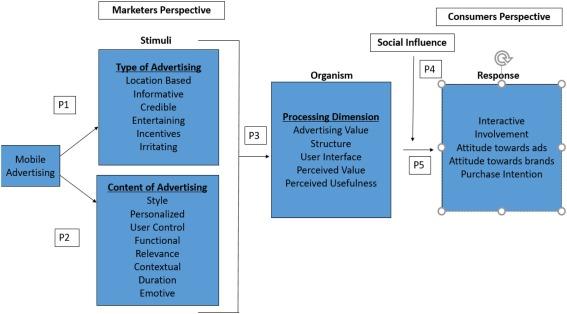5 Inspiring Case Studies Showcasing Successful Inclusion Strategies That Work
Introduction: Why Inclusion Strategies Matter
In today’s diverse world,successful inclusion strategies are essential for creating workplaces and educational environments where everyone feels valued and empowered. Businesses and schools that prioritize inclusion and diversity not only enhance productivity but also build stronger communities and drive innovation. This article highlights 5 inspiring case studies demonstrating effective inclusion strategies that deliver real, measurable results.Whether you’re a leader, educator, or employee, these stories can offer valuable insights and actionable takeaways to fuel your own inclusion journey.
Key benefits of Implementing Successful Inclusion Strategies
- Increased employee engagement: Inclusive cultures make individuals feel respected and heard, boosting morale and retention.
- Enhanced performance: Teams built on inclusion and diversity outperform homogenous teams through varied perspectives and innovation.
- Brand reputation: Organizations committed to DEI are viewed more favorably by customers and investors.
- Better problem-solving: diverse opinions foster creativity, enabling more effective and innovative solutions.
5 Successful Inclusion Strategies: Inspiring Case Studies
The following case studies demonstrate how top organizations and schools have embedded inclusion strategies into their culture for long-term success.
1. Microsoft: Empowering Employees with Disabilities
Challenge: Microsoft recognized that traditional hiring practices inadvertently excluded neurodiverse individuals, especially those with autism.
Inclusion Strategy:
- Developed the Autism Hiring Program to tailor recruitment and interview practices to neurodiverse candidates’ strengths.
- Provided managers and coworkers with training on neurodiversity and inclusive dialog.
- Offered on-the-job support and mentorship post-hire.
Results: Microsoft not only increased workplace diversity but also improved team performance and employee satisfaction. This program has since become a model for other tech companies.
2. Sodexo: Building Gender Equity through Mentoring
Challenge: Sodexo’s leadership ranks were imbalanced, with women underrepresented in managerial positions.
Inclusion Strategy:
- launched a mentoring program for women at all company levels.
- Set measurable goals for gender parity and tracked progress annually.
- Introduced unconscious bias training for all employees and leaders.
Results: Sodexo improved gender diversity across its workforce, reaching a 43% depiction of women in leadership roles. This shift led to greater collaboration, innovation, and higher employee engagement scores.
3. IBM: Fostering LGBTQ+ Inclusion Worldwide
Challenge: IBM aimed to support its LGBTQ+ employees and ensure equal opportunities globally, even where such rights are not legally recognized.
Inclusion Strategy:
- Established an LGBTQ+ employee resource group and formal non-discrimination policies worldwide.
- Implemented gender-neutral restrooms and provided inclusive healthcare benefits.
- Launched ally education programs and celebrated Pride globally.
Results: These efforts led to a more supportive and open culture, earning IBM recognition on multiple “best Places to Work for LGBTQ+ equality” lists and contributing to improved overall satisfaction and recruitment.
4. Salesforce: Advancing Racial Equity through Pay Openness
Challenge: Salesforce wanted to address pay equity concerns and foster racial inclusion within its ranks.
Inclusion Strategy:
- conducted annual pay audits to identify and close gaps in compensation by gender and ethnicity.
- Created a Chief Equality Officer role and built a company-wide inclusion dashboard.
- Established employee resource groups for various racial and ethnic backgrounds.
Results: Salesforce corrected pay gaps, increased representation of minority employees, and saw significant improvements in trust and transparency, positioning the company as an industry leader in inclusion and belonging.
5. Toronto District School Board: Inclusive Education for All
Challenge: The TDSB faced achievement gaps among students from different backgrounds and abilities.
Inclusion Strategy:
- Adopted a universal design for learning (UDL) approach to instruction, creating lesson plans that accommodate multiple learning styles and abilities.
- Launched anti-racism and anti-bias training for teachers and staff.
- Partnered with parents and community leaders to ensure policies reflect the needs of all students.
Results: Graduation rates and student engagement improved. The district experienced fewer disciplinary incidents and a stronger sense of belonging among students.
Practical Tips for Implementing Inclusion Strategies
- Start with leadership buy-in: Secure executive-level commitment to foster a culture of inclusion and diversity from the top down.
- Embrace continuous learning: Offer training on unconscious bias, cultural competency, and inclusive leadership regularly.
- Create safe spaces: Establish employee or student resource groups and provide accessible channels for feedback and support.
- Set clear, measurable goals: Tie inclusion and diversity objectives to business or institutional outcomes and review progress frequently.
- Cultivate open communication: Encourage honest, respectful dialogue about inclusion, challenges, and successes throughout the institution.
First-Hand Experience: Voices from the Field
“our Autism Hiring Program has allowed us to tap into a pool of talented individuals who think differently, innovate, and strengthen our teams. Inclusion isn’t just the right thing to do—it’s what sets us apart.”
— Director of Global Diversity, Microsoft
“Seeing more women in leadership at Sodexo has shown me that anything is absolutely possible. The mentorship program was a game-changer for my career.”
— Operations Manager, Sodexo
Conclusion: The Future of Diversity, Equity, and Inclusion
These 5 inspiring case studies showcase how successful inclusion strategies transform organizations and educational institutions alike. by prioritizing diversity, equity, and inclusion, your workplace or school can unlock the potential of every individual and build a more just, innovative, and resilient future. Take inspiration from these examples—and remember, the journey to true inclusion is ongoing, requiring commitment, empathy, and action at every level.
Looking to enhance your own inclusion initiatives? Start now by assessing your current practices,getting leadership on board,and fostering an open surroundings where every voice matters. Diversity and inclusion aren’t just buzzwords—they’re the key to long-term success and organizational excellence.

